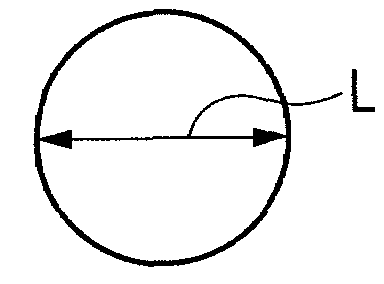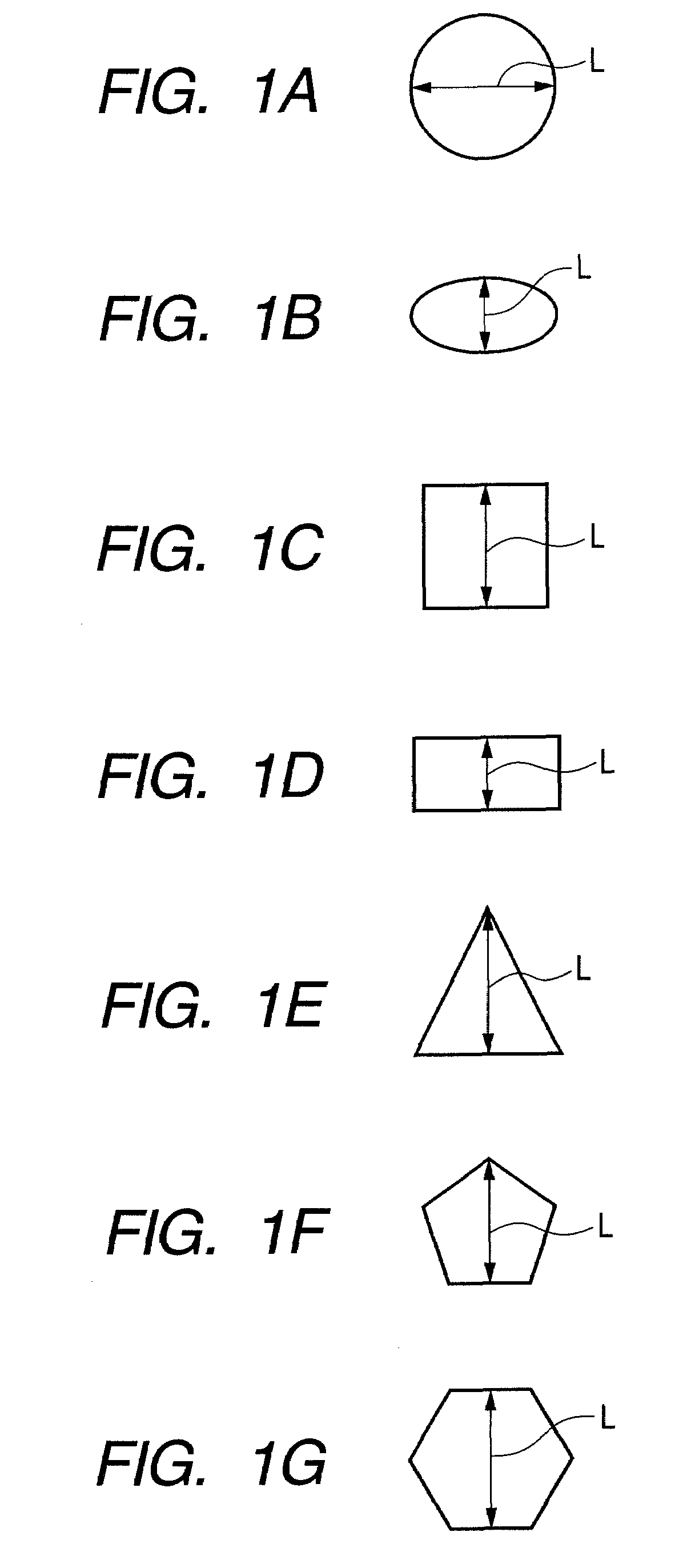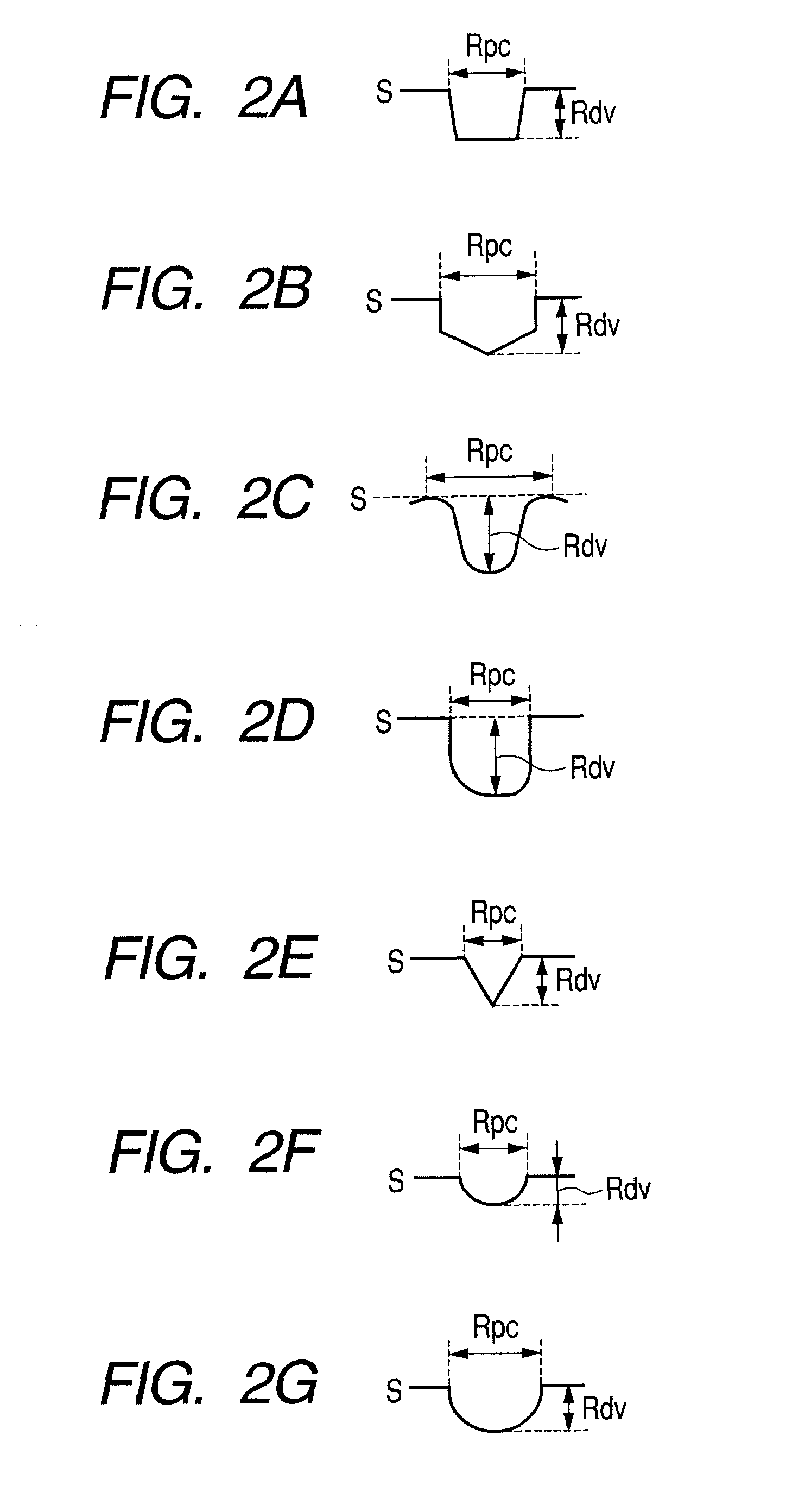Electrophotographic photosensitive member, process cartridge, and electrophotographic apparatus
a photosensitive member and electrophotography technology, applied in the direction of electrographic process, electrographic discharge, instruments, etc., can solve the problems of inability to reduce the contact area between the photosensitive member surface and the elastic charge member or cleaning blade, and the effect of suppressing friction memory cannot be obtained
- Summary
- Abstract
- Description
- Claims
- Application Information
AI Technical Summary
Benefits of technology
Problems solved by technology
Method used
Image
Examples
example 1
[0146]An aluminum cylinder 30 mm in diameter and 260.5 mm in length which had been subjected to surface cutting processing was used as a support (cylindrical support).
[0147]Next, a solution containing the following components was dispersed for about 20 hours with a ball mill to prepare a conductive layer coating solution.
[0148]
Powder containing barium sulfate particles60 partshaving a coating layer of tin oxide (trade name:“Pastran PC1”; manufactured by Mitsui Mining& Smelting Co., Ltd.)Titanium oxide (trade name: “Titanix JR”;15 partsmanufactured by Tayca Corporation)Resol type phenolic resin (trade name:43 parts“Phenolite J-325”; manufactured by DICCorporation Co., Ltd.; solid content: 70%)Silicone oil (trade name: “SH28PA”;0.015 parts manufactured by Toray-Dow Corning Silicone Co., Ltd.)Silicone resin (trade name: “Tospearl 120”;3.6 parts manufactured by Toshiba Silicone Co., Ltd.)2-Methoxy-1-propanol50 partsMethanol50 parts
[0149]The thus-prepared conductive layer coating soluti...
example 2
[0168]An electrophotographic photosensitive member was produced in the same manner as in Example 1. Next, the surface of the electrophotographic photosensitive member was subjected to the same processing as in Example 1, except that, in the mold used for Example 1, the minor axis diameter indicated by D in FIG. 10 was changed from 1.0 μm to 0.5 μm, the interval indicated by E in FIG. 10 was changed from 1.0 μm to 0.5 μm, and the height indicated by F in FIG. 10 was changed from 0.8 μm to 0.4 μm. It was confirmed by measuring the surface profile in the same manner as in Example 1 that conical depressed portions were formed. The measurement results are shown in Table 1. Further, the depressed portions were formed at 0.5 μm intervals, and the area ratio was calculated to be 20%. The properties of the electrophotographic photosensitive member were evaluated in the same manner as in Example 1. The results are shown in Table 1.
example 3
[0169]An electrophotographic photosensitive member was produced in the same manner as in Example 1. Next, the surface of the electrophotographic photosensitive member was subjected to the same processing as in Example 1, except that, in the mold used for Example 1, the minor axis diameter indicated by D in FIG. 10 was changed from 1.0 μm to 0.2 μm, the interval indicated by E in FIG. 10 was changed from 1.0 μm to 0.2 μm, and the height indicated by F in FIG. 10 was changed from 0.8 μm to 0.16 μm. It was confirmed by measuring the surface profile in the same manner as in Example 1 that conical depressed portions were formed. The measurement results are shown in Table 1. Further, the depressed portions were formed at 0.2 μm intervals, and the area ratio was calculated to be 20%. The properties of the electrophotographic photosensitive member were evaluated in the same manner as in Example 1. The results are shown in Table 1.
PUM
| Property | Measurement | Unit |
|---|---|---|
| ionization potential | aaaaa | aaaaa |
| ionization potential | aaaaa | aaaaa |
| depth Rdv | aaaaa | aaaaa |
Abstract
Description
Claims
Application Information
 Login to View More
Login to View More - R&D
- Intellectual Property
- Life Sciences
- Materials
- Tech Scout
- Unparalleled Data Quality
- Higher Quality Content
- 60% Fewer Hallucinations
Browse by: Latest US Patents, China's latest patents, Technical Efficacy Thesaurus, Application Domain, Technology Topic, Popular Technical Reports.
© 2025 PatSnap. All rights reserved.Legal|Privacy policy|Modern Slavery Act Transparency Statement|Sitemap|About US| Contact US: help@patsnap.com



